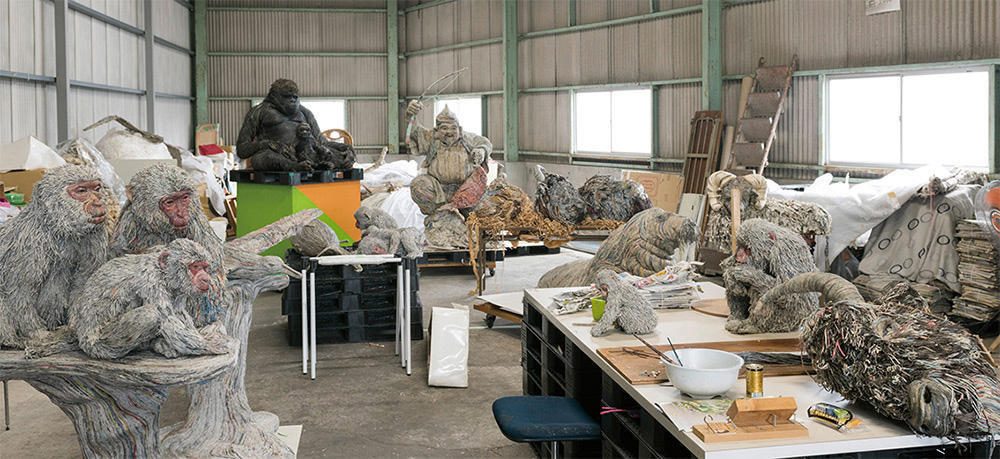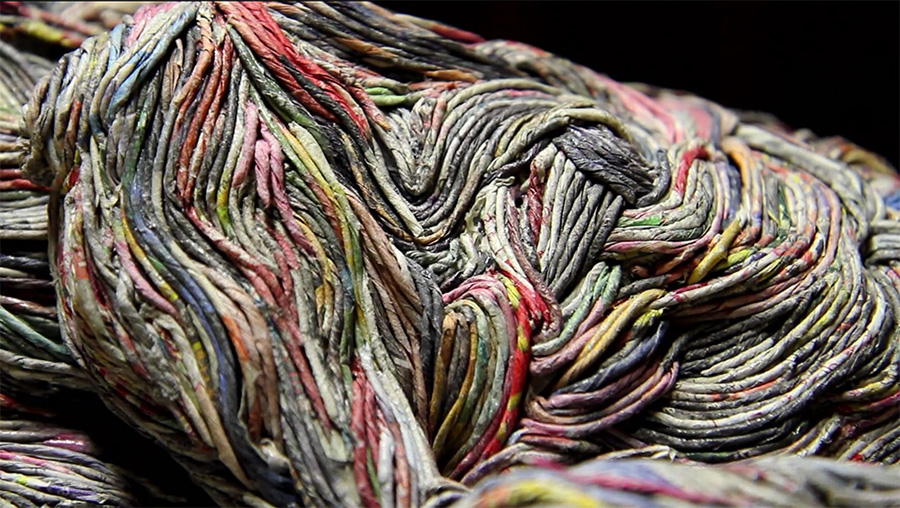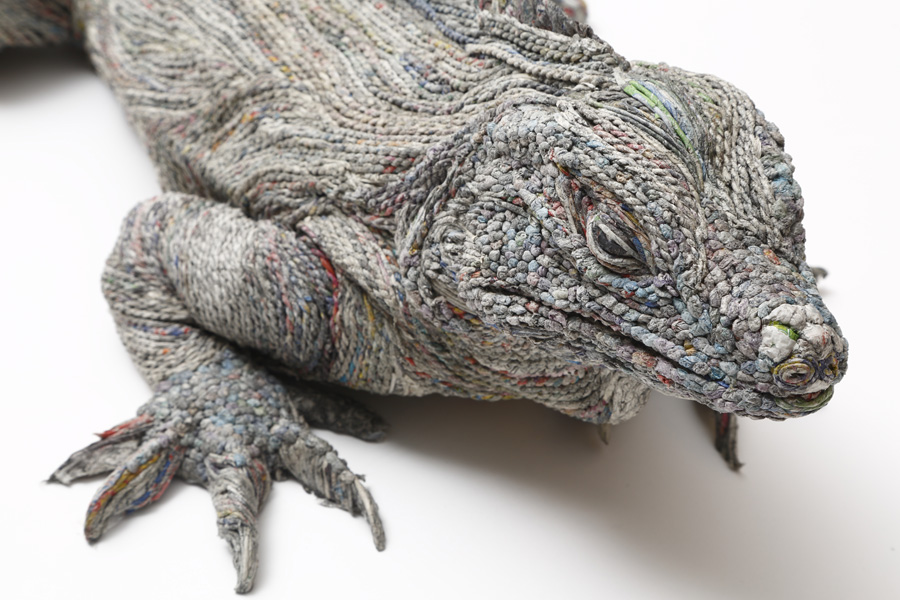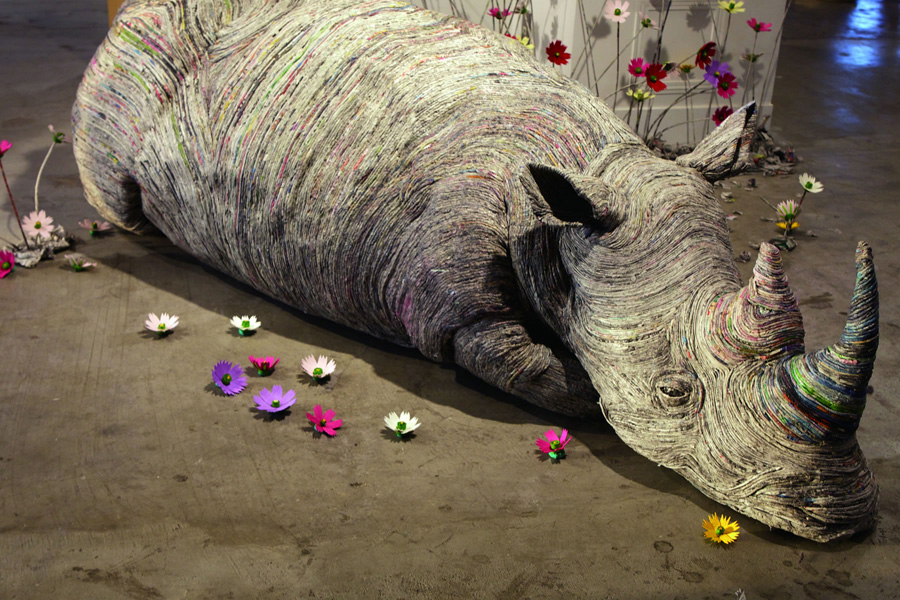Isn’t it incredible how the most intricate artworks can be created from the simplest of materials and a little bit of human ingenuity?
Take the work of Japanese artist Chie Hiotsuyama. The life she breathes into her statues is palpable, but how she does it is what truly defines her brilliance as a creator.
So what’s the secret? They’re all made from newspaper.
That’s all. By simply covering the newspaper in glue and twisting it up into strands that dry to become incredibly strong, yet pliant enough to shape, Hitotsuyama has brought to life such creatures as rhinos, rabbits, gorillas, dugongs, and even the Japanese fishing god, Ebisu.
Perhaps the key to Hitosuyama’s talent is her ability to gauge the exact size and shape required for each strip of paper. This knowledge allows her to manipulate a single material to portray such various textures as the fur of the yak, a turtle’s shell, or the scales of an iguana.
Hitotsuyama links her style back to her days hanging out at her grandfather’s paper strip-making plant. With little else in the way of entertainment at her disposal, she often played with the scraps littering the employee’s workspaces.
She never thought she’d become an artist though. Even while studying at an art college in Tokyo, Hitotsuyama didn’t feel she belonged until she met Tomiji Tamai, her creative director at Hitotsuyama Studio. Together, they have worked to make the studio an internationally recognised name.
Hitotsuyama’s first work (above) is entitled “An Ode to Your Cry; I Still Hear it, Even Now”. Produced in 2011, it is her response to a trip to Zambia in 2007, where she saw firsthand a rhino that had been stolen of its horns by poachers.
The pose the sculpture takes is a replica of the slump in which she found the forlorn creature, but Hitotsuyama returned the horns using coloured paper. It draws our attention, and gives the horns a magical property so to reinforce the value of what has been lost.
https://vimeo.com/183929956
Paper Trails is currently exhibiting throughout the US, where Hitotsuyama has taken up residency at the Museum of Art & History, Lancaster. See the video for more details.




